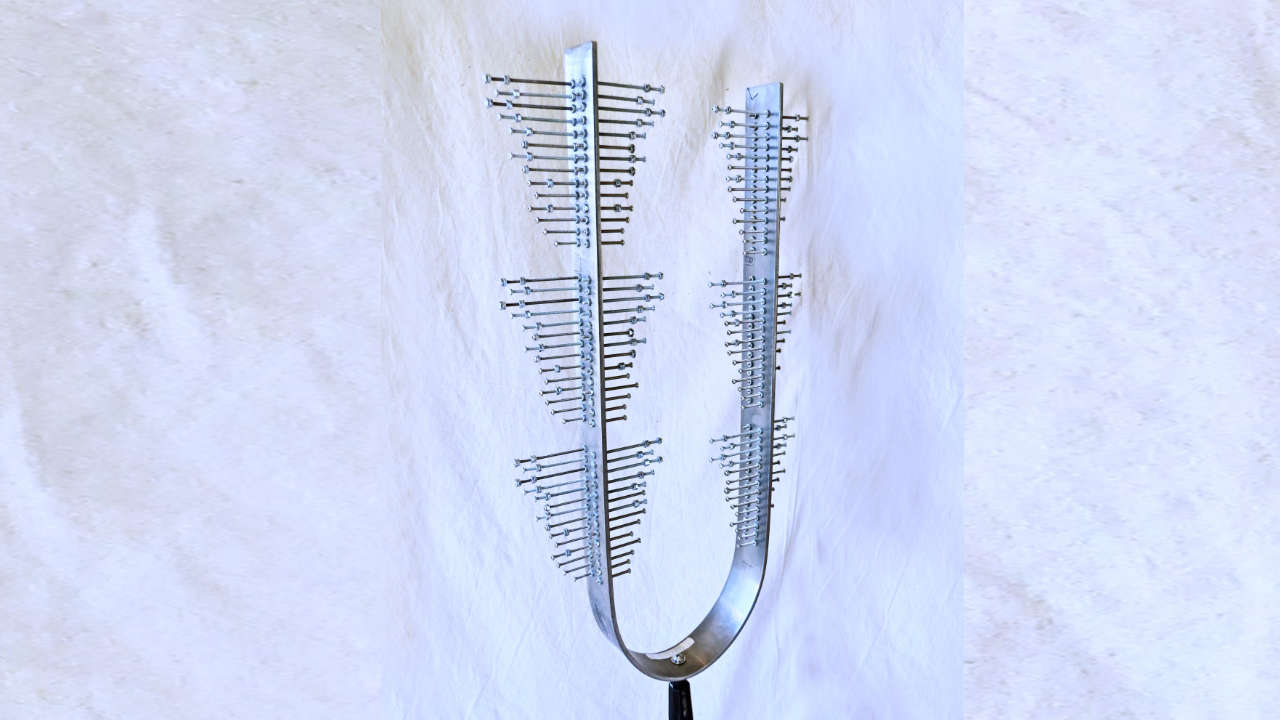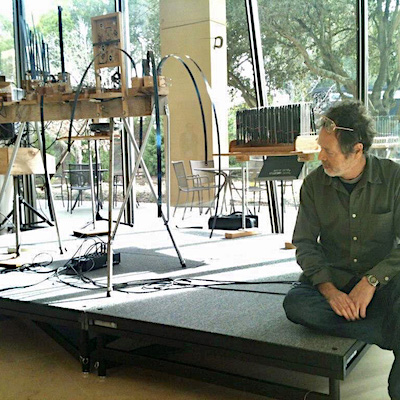...U...
U is a lamelaphone (that's the generic term for instruments with vibrating tines) in a U-shaped configuration. For each pitch there is not one but many tines in a row, tuned mostly in octaves, which can be played by stroking with a plectrum across the row for an unusual glissy-tremolo multi-octave tone.
 U is glissy lamellaphone. Rather than having one tine for each note, U has 14 closely spaced tines per note. Each note’s group of tines is tuned in octaves and fifths across a range of three or four octaves. You sound the note by stroking with a glissing action across the array of tines for the chosen note, using a thin stick-like plectrum. There are twelve such groups forming a chromatic scale. Since each group spans several octaves, you can play melodies spanning more than one octave by emphasizing the higher or lower tines as needed within the groups. The tines are made of narrow stainless steel machine screws, tuned by adjusting the length using the hex nuts that secure them at the base. In addition, most of the screws are overtone-tuned by means of additional hex nuts serving as adjustable weights along the length. The instrument can be laid across a specially configured styrofoam chest, in which case the styrofoam does an excellent job as a soundboard, taking the vibration and projecting it out into the air. Or it can be played upright on a stand which includes an easily attached piezo system for amplification.
U is glissy lamellaphone. Rather than having one tine for each note, U has 14 closely spaced tines per note. Each note’s group of tines is tuned in octaves and fifths across a range of three or four octaves. You sound the note by stroking with a glissing action across the array of tines for the chosen note, using a thin stick-like plectrum. There are twelve such groups forming a chromatic scale. Since each group spans several octaves, you can play melodies spanning more than one octave by emphasizing the higher or lower tines as needed within the groups. The tines are made of narrow stainless steel machine screws, tuned by adjusting the length using the hex nuts that secure them at the base. In addition, most of the screws are overtone-tuned by means of additional hex nuts serving as adjustable weights along the length. The instrument can be laid across a specially configured styrofoam chest, in which case the styrofoam does an excellent job as a soundboard, taking the vibration and projecting it out into the air. Or it can be played upright on a stand which includes an easily attached piezo system for amplification.
Curator note:
Bart exhibited and performed with Pet the Tiger at the very first Maker Music Festival in 2018. We were thrilled to have him there and, now, to have him here.
Bart exhibited and performed with Pet the Tiger at the very first Maker Music Festival in 2018. We were thrilled to have him there and, now, to have him here.
Very short story:
A while back I found a washer in the dryer.
(I must have absent-mindedly put in it my pants pocket while working in the shop.)
A while back I found a washer in the dryer.
(I must have absent-mindedly put in it my pants pocket while working in the shop.)
